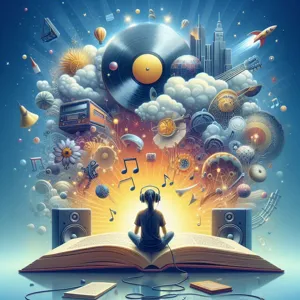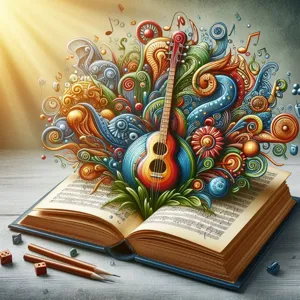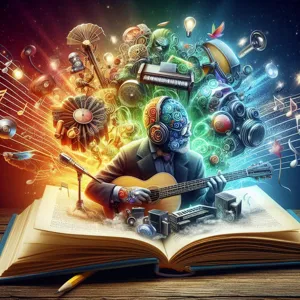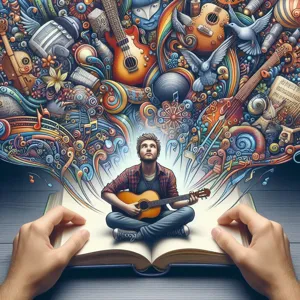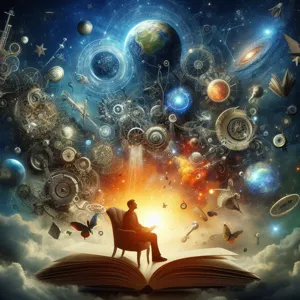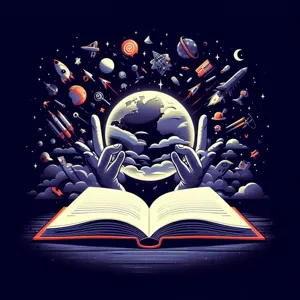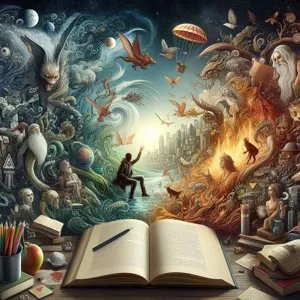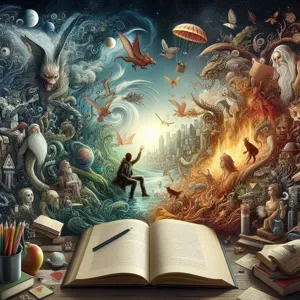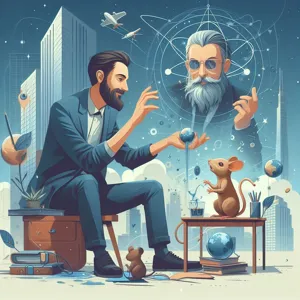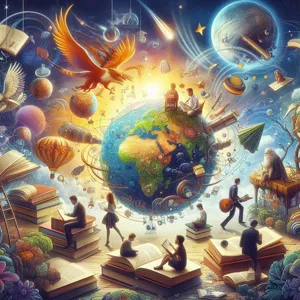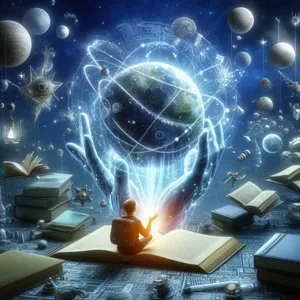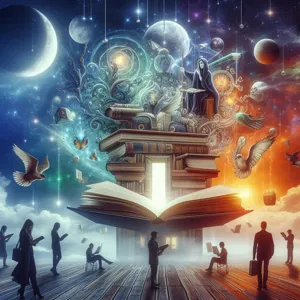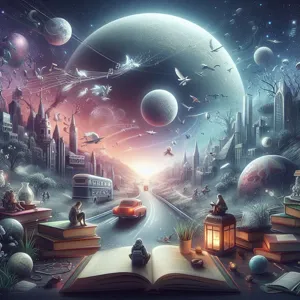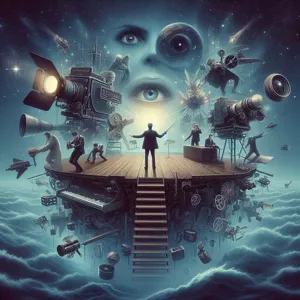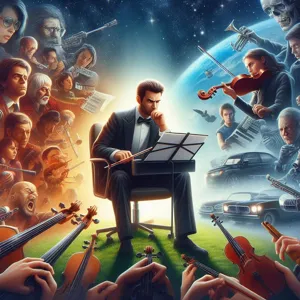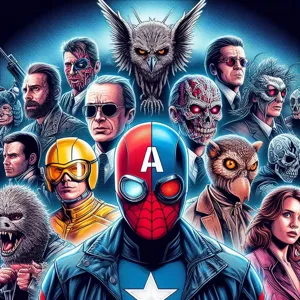As the world of gaming continues to evolve, the role-playing game (RPG) genre remains a beloved cornerstone for PC gamers seeking immersive storytelling, intricate character development, and expansive worlds to explore.
In 2023, the landscape is richer than ever, boasting a diverse array of titles that cater to every type of adventurer. From epic fantasy realms teeming with magic and mythical creatures to gritty, post-apocalyptic settings where survival is paramount, this year’s offerings promise to captivate players and transport them into realms limited only by their imaginations. whether you’re a seasoned veteran or a newcomer eager to embark on your first quest, our curated list of the top 10 must-play RPGs for PC gamers in 2023 will guide you through the essential experiences that deserve a place on your gaming playlist. Get ready to dive into striking narratives, engage in strategic battles, and forge unforgettable alliances as we explore the pinnacle of rpg gaming this year!
1. Introduction to RPGs and Their Appeal
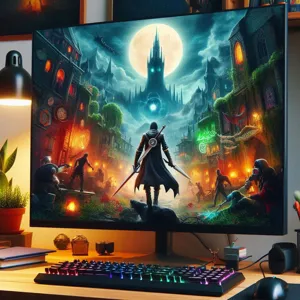
Role-playing games (RPGs) have long captivated the hearts and minds of gamers, and 2023 proves to be no exception. These immersive experiences allow players to step into richly crafted worlds, assume the identities of unique characters, and embark on epic quests filled with adventure, danger, and discovery. The appeal of RPGs lies not only in their engaging narratives and dynamic gameplay but also in their ability to create personal connections with the characters and stories that unfold.
At the core of every great RPG is a compelling narrative, often woven with moral dilemmas, complex relationships, and choices that shape the outcome of the game. Players can spend hours, if not days, navigating through intricate plots, forging alliances, and battling formidable foes. The freedom to customize characters—from their appearance to their skills—empowers players to invest themselves in the journey, making every decision feel impactful.
Moreover, RPGs often feature expansive worlds teeming with lore and secrets, encouraging exploration and discovery. Whether you’re traversing a post-apocalyptic wasteland, a fantastical realm brimming with magic, or a futuristic cityscape, each environment is designed to draw players in, providing countless opportunities for adventure and storytelling.
In addition to their rich narratives and immersive worlds, RPGs foster a sense of community among players. Many titles offer cooperative gameplay options or online multiplayer experiences, allowing friends to join forces in their quests or engage in competitive arenas. This social aspect enhances the overall experience, creating lasting memories and friendships forged through shared adventures.
As we dive into our list of the top 10 must-play RPGs for PC gamers in 2023, prepare to embark on journeys that will challenge your mind, stir your emotions, and transport you to realms beyond imagination. Whether you’re a seasoned veteran or a newcomer to the genre, there’s something here for everyone, promising an unforgettable experience filled with heroics, challenges, and endless possibilities.
2. Criteria for Selecting the Top RPGs
When curating a list of the top RPGs for PC gamers in 2023, several key criteria come into play to ensure that each title not only captivates the audience but also stands the test of time in gameplay, storytelling, and innovation.
**1. Engaging Storyline:** At the heart of any great RPG lies a compelling narrative. The chosen games must offer rich storytelling that immerses players in vast, intricately woven worlds. Whether through complex character arcs, morally ambiguous choices, or epic quests, a strong narrative is essential for creating an unforgettable gaming experience.
**2. Character Development:** A hallmark of RPGs is the ability to shape and evolve characters. The best titles provide players with deep customization options, allowing them to create unique heroes or anti-heroes. Furthermore, the depth of the character progression system—how skills, abilities, and relationships develop over time—plays a crucial role in a game’s appeal.
**3. World-Building:** The setting of an RPG can make or break its success. The selected games must feature expansive, detailed worlds that invite exploration. From lush forests to gritty urban landscapes, a well-crafted environment enhances immersion, encouraging players to lose themselves in the game’s atmosphere.
**4. Gameplay Mechanics:** Innovative gameplay mechanics that blend traditional RPG elements with fresh ideas are vital. This includes combat systems, crafting, exploration, and quest structures. The top RPGs of 2023 should strike a balance between accessibility for newcomers while still offering depth for veteran players.
**5. Community and Multiplayer Elements:** In today’s gaming landscape, a strong community can elevate a game’s longevity. Titles that offer cooperative gameplay, competitive elements, or robust mod support can create vibrant ecosystems where players share experiences and content, fostering a sense of belonging.
**6. visual and Audio Design:** Aesthetics matter. The best RPGs feature stunning graphics and art styles that complement the game’s theme, alongside immersive sound design and music that enhance emotional engagement and atmosphere.
By applying these criteria, we aim to present a well-rounded selection of RPGs that not only entertain but also resonate deeply with players, ensuring that each title on our list is worthy of your time and investment in 2023. Whether you’re seeking epic adventures, gripping narratives, or captivating worlds, our top picks are sure to satisfy every RPG enthusiast’s craving for adventure.
3. Game #1: [Title] – Overview and Highlights

Baldur’s Gate III has taken the gaming world by storm in 2023, reviving a classic franchise with stunning visuals and deep, immersive storytelling. set in the iconic Dungeons & Dragons universe, this RPG invites players to explore the sprawling realms of Faerûn, where they will encounter a richly woven narrative filled with intrigue, danger, and moral dilemmas.
At its core, Baldur’s Gate III offers a turn-based combat system that combines tactical depth with a refreshing emphasis on player choice. Players can create their unique characters from a variety of races and classes, each equipped with skills that can dramatically influence gameplay. Whether you prefer sneaking through shadows as a rogue or casting powerful spells as a wizard, the game caters to a wide spectrum of playstyles.
One of the standout features of Baldur’s Gate III is its dynamic storytelling. Your choices matter – not just in dialogue, but also in how you interact with the environment and other characters. With a branching narrative that adapts to your decisions, every playthrough feels unique. The game is populated with memorable characters, including companions who can join your journey, each with their own backstories and quests that enrich the overall experience.
Visually, Baldur’s Gate III is a feast for the eyes, boasting stunning graphics that bring the vibrant landscapes and intricate details of its world to life. From the dark and gritty underbelly of cities to the lush wilderness teeming with magical creatures, every location is meticulously crafted to immerse players in the adventure.
Furthermore, the game supports both single-player and cooperative multiplayer modes, allowing friends to join forces and tackle challenges together. This collaborative aspect not only enhances gameplay but fosters a stronger camaraderie among players as they strategize and embark on quests as a team.
In summary, Baldur’s Gate III is a masterclass in modern RPG design, combining rich storytelling, tactical combat, and stunning visuals to create an unforgettable gaming experience. Whether you’re a longtime fan of the series or new to the world of RPGs, this title is a must-play that will undoubtedly keep players enthralled for hours on end.
4. Game #2: [Title] – Unique Features and Gameplay
Baldur’s Gate 3 takes players on a mesmerizing journey through the rich lore of the Dungeons & Dragons universe, seamlessly blending traditional RPG elements with innovative gameplay mechanics. Set in the iconic city of Baldur’s Gate and its surrounding territories, this game invites you into a world brimming with fantastical creatures, intricate storytelling, and moral dilemmas that challenge your character’s integrity and beliefs.
One of the most standout features of Baldur’s Gate 3 is its turn-based combat system, which allows for strategic planning and tactical maneuvers. Unlike its predecessors that utilized real-time combat, this modern interpretation encourages players to think critically about each move, leveraging the unique abilities of their party members. Whether you’re utilizing spellcasting, ranged attacks, or cunning stealth tactics, the variety of combat styles ensures that every encounter feels dynamic and engaging.
Character customization is another highlight, offering players the freedom to create a hero that aligns with their vision. You can choose from a range of races and classes, each with its own strengths and weaknesses, and even delve into subclasses that provide specialized skills. The depth of character development doesn’t stop there; players can shape their character’s personality through choices that impact the storyline and relationships with companions, making every playthrough a uniquely personal experience.
Moreover, the game’s dialogue system is intricately designed, featuring a branching narrative that responds to your decisions. Conversations can lead to unexpected alliances or fierce rivalries, with every choice potentially altering the course of the story. The stunning graphics and immersive environments bring the world to life, encouraging exploration and discovery at every turn.
Baldur’s Gate 3 also embraces cooperative multiplayer gameplay, allowing friends to join forces in their quest or engage in fierce competition. Whether you’re embarking on epic quests together or engaging in heated debates over character choices, the multiplayer aspect enhances the overall experience, making it a game best enjoyed with others.
With its rich storytelling, immersive world, and strategic gameplay, Baldur’s Gate 3 stands out as a must-play RPG for PC gamers in 2023. It’s not just a game; it’s an adventure filled with memorable characters, thrilling battles, and countless hours of exploration, ensuring that players will be captivated long after the credits roll.
5. Game #3: [Title] – Storyline and Character Development
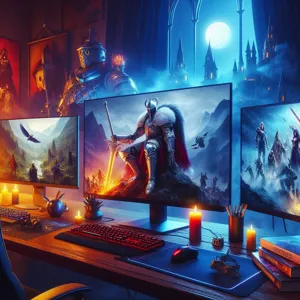
Baldur’s Gate 3 stands as a shining testament to the evolution of RPG storytelling and character development, seamlessly weaving together rich narratives with complex character arcs. Set in the iconic Dungeons & Dragons universe, this game invites players into a world brimming with intrigue, danger, and moral dilemmas that demand thoughtful choices.
The storyline kicks off with a gripping prologue, where players find themselves infected with a tadpole that grants mysterious powers but threatens to turn them into a mind flayer. This hook draws you into a narrative labyrinth filled with betrayal, alliances, and the looming threat of a devastating invasion. As you navigate the intricacies of this storyline, your decisions—big or small—carry weight, influencing not only the overarching plot but also the fates of the characters you encounter.
Character development in Baldur’s Gate 3 is equally compelling. Players can create their own unique protagonists, choosing from a diverse array of races, classes, and backgrounds that shape their abilities and interactions. The game excels at providing depth and personality to its non-playable characters (NPCs) as well. Each companion you recruit comes with their own backstory, motivations, and quests, allowing for dynamic relationships that evolve based on your choices. Whether you forge a strong bond or create an adversarial tension, the interactions feel organic and impactful, enhancing the overall immersion.
Moreover, the game showcases a rich tapestry of dialogue options that reflect your character’s traits and past decisions, allowing for a truly personalized experience. The branching narratives mean that no two playthroughs are the same, offering immense replayability as players explore different choices and their consequences.
In summary, Baldur’s Gate 3 is not merely a game; it is a living, breathing world where your choices shape the story, making it an essential experience for any RPG enthusiast in 2023. Prepare to lose yourself in its intricate narrative and unforgettable characters, where every decision echoes throughout the realms.
6. Game #4: [Title] – Graphics and Visual Experience
From the moment you step into the hauntingly beautiful world of **Elden Ring**, it’s clear that visual storytelling is a cornerstone of this epic RPG. Developed by FromSoftware, the game masterfully combines stunning graphics with an atmospheric design that draws players into its intricate landscapes. The expansive environments range from lush, verdant forests to desolate, crumbling ruins, each teeming with intricate details that invite players to explore every nook and cranny.
The game’s art direction is nothing short of breathtaking. The developers have created a rich, dark fantasy world that echoes the gothic aesthetics of their previous titles while introducing new, awe-inspiring vistas. The lighting plays a pivotal role in this visual experience, casting shadows that dance across the terrain, evoking a sense of realism and immersion that is truly remarkable. As you traverse through the eerie fog of the Mistwood or gaze upon the majestic architecture of the Roundtable Hold, you can’t help but feel a sense of wonder and foreboding.
Moreover, **Elden Ring** excels in its character and creature design, showcasing a wide array of meticulously crafted enemies and allies. Each character is imbued with unique visual flair, from the grotesque forms of the bosses to the armor-clad warriors you encounter along your journey. The animation quality is equally impressive, with fluid movements during combat that bring the intensity of battles to life, making every swing of your weapon or spellcasting feel impactful.
The use of color in **Elden Ring** also adds layers to its storytelling. Subtle shifts in the color palette reflect the mood of the environment and the stakes of the narrative, enhancing the emotional weight of your journey. The dynamic weather system further enriches the visual experience, creating a living world that feels responsive and alive.
In summary, **Elden Ring** not only captivates players with its engaging gameplay and narrative but also delivers a stunning visual experience that lingers long after you’ve put the game down. It’s a testament to the power of graphics in enhancing storytelling and player immersion, making it a must-play title for any RPG enthusiast in 2023.
7. Game #5: [Title] – Combat System and Mechanics
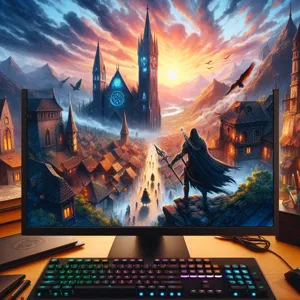
In 2023, **Elden Ring** remains a standout title that has captivated RPG enthusiasts with its innovative combat system and intricate mechanics. Developed by FromSoftware, this game takes the hallmark difficulty of the Souls series and infuses it with a vast open world, inviting players to immerse themselves in a rich, lore-filled environment.
The combat in **Elden Ring** is a masterclass in strategy and skill. Players can choose from a diverse array of weapons, spells, and combat styles, allowing for a personalized gameplay experience. Whether you prefer the swift elegance of dual-wielding blades or the heavy, bone-crushing impact of a colossal sword, the game’s mechanics accommodate every playstyle. The fluidity of the combat system is particularly noteworthy; it feels responsive and rewarding, with each swing and parry echoing the weight of your character’s gear and build.
The introduction of the “Spirit Summon” system adds another layer of depth to the combat. Players can summon spectral allies to aid them in battle, enabling tactical maneuvers that can turn the tide in challenging encounters. This is especially useful when facing the formidable bosses that the game is famous for, each one requiring unique strategies and careful timing to defeat.
Moreover, the game encourages exploration with its diverse landscapes, each hiding secrets and powerful foes. The risk-reward balance is ever-present; venturing into unknown territories may lead to valuable loot, but it can also result in a swift defeat. **Elden Ring** excels at creating a sense of tension and excitement, as players must learn enemy patterns and adapt their strategies on the fly.
With its stunning visuals, immersive world-building, and a combat system that rewards skill and creativity, **Elden Ring** is not just a game; it’s an experience that reinforces why RPGs are beloved by gamers around the globe. Whether you’re a veteran of the genre or a newcomer, the intricate mechanics of **Elden Ring** promise countless hours of engaging gameplay that will keep you coming back for more.
8. Game #6: [Title] – Multiplayer Options and Community
In the realm of role-playing games, **Baldur’s Gate 3** has emerged as a titan, captivating players with its intricate storytelling and rich world-building. Beyond its compelling single-player experience, the game shines in its multiplayer options, allowing friends to embark on epic quests together. This cooperative feature transforms the gameplay into a shared adventure, where decisions affect not just the individual character, but the entire party’s journey.
The multiplayer mode supports both online and local co-op play, enabling players to team up as they navigate the challenges laid out by the game’s dynamic environment. With up to four players, each person can create their own character, bringing unique abilities and perspectives to the table. This collaborative approach encourages strategic discussions and teamwork, making every encounter a thrilling experience. Whether you’re strategizing to outsmart a fearsome dragon or simply engaging in light-hearted banter during a campfire, the camaraderie built through shared gameplay is what makes Baldur’s Gate 3 truly special.
Moreover, the game boasts a vibrant and active community that enhances the overall experience. Players share their stories, character builds, and gameplay tips across various forums and social media platforms, creating a rich tapestry of shared experiences. Engaging with this community allows players to tap into a wealth of resources, from fan art to in-depth guides, further deepening their immersion in the game. The developers’ commitment to engaging with players through regular updates and community events fosters a sense of belonging, ensuring that no adventurer feels alone on their quest.
In summary, Baldur’s Gate 3 offers an exceptional blend of multiplayer options and a supportive community, making it a must-play title for any RPG enthusiast in 2023. Whether you’re diving into the game solo or teaming up with friends for epic adventures, the possibilities are limitless, and the memories made are bound to last a lifetime.
9. Game #7: [Title] – Expansions and DLC Content
*Divinity: Original Sin 2* continues to reign as a titan in the RPG genre, captivating players with its rich narrative, intricate mechanics, and a vast world teeming with choices. Released to critical acclaim, this game has expanded its horizons even further through a series of expansions and downloadable content (DLC) that elevate the experience to new heights.
The most notable expansion, *Divinity: Original Sin 2 – Definitive Edition*, introduces a plethora of new content that enhances the core gameplay. Players are greeted with a reworked narrative, additional character classes, and an enriched story filled with new quests that deepen the lore of Rivellon. The expansion also offers improved graphics and refined mechanics, making the journey through this beautifully crafted world even more immersive.
In addition to the core game and its expansions, various DLC packs have been released, each offering unique adventures and challenges. These packs feature new companions, who bring their own stories and abilities to the table, as well as fresh quests that encourage exploration of hidden corners of the game world. Through these expansions, players can engage in new combat scenarios, encounter formidable bosses, and uncover secrets that intertwine with the main storyline.
The community surrounding *Divinity: Original Sin 2* is vibrant, with mod support allowing players to create and share their own content, further extending the game’s longevity. This continuous stream of new material not only keeps the gameplay fresh but also fosters a sense of camaraderie among players as they share strategies and experiences.
With every update and piece of DLC, *Divinity: Original Sin 2* solidifies its place in the RPG hall of fame. For those seeking a profound and ever-evolving gaming experience in 2023, diving into this title and its expansive content is an adventure that simply cannot be missed. Whether you’re a seasoned player or a newcomer, the rich universe of *Divinity: Original Sin 2* awaits, promising countless hours of engrossing gameplay and unforgettable moments.
10. Game #8: [Title] – Accessibility and Learning Curve
*Baldur’s Gate III* has taken the gaming world by storm, not only for its rich narrative and stunning graphics but also for its remarkable approach to accessibility and player onboarding. This game serves as a perfect entry point for both seasoned RPG veterans and newcomers alike, striking a balance between depth and approachability.
One of the standout features of *Baldur’s Gate III* is its user-friendly interface, which streamlines character creation and combat mechanics without sacrificing the complexity that fans of the genre crave. The game offers extensive tutorials and in-game prompts that guide players through the intricacies of its turn-based combat system and the rules borrowed from Dungeons & Dragons 5th Edition. This makes it easier for players unfamiliar with tabletop mechanics to grasp the essentials without feeling overwhelmed.
Additionally, the game boasts customizable difficulty settings, allowing players to tailor their experience according to their skill level. Newcomers can opt for a more forgiving experience, while veterans can ramp up the challenge with tougher enemies and more strategic demands. This flexibility ensures that everyone can enjoy the game at their own pace.
The accessibility options extend beyond gameplay mechanics, with thoughtful features such as text-to-speech for dialogue and customizable controls for those with physical disabilities. This inclusivity allows a broader audience to engage with the rich storytelling and immersive world of *Baldur’s Gate III*.
By prioritizing accessibility and a gentle learning curve, *Baldur’s Gate III* not only welcomes new players into the expansive universe of RPGs but also provides a satisfying experience for experienced gamers. Whether you’re embarking on a quest for the first time or revisiting the beloved realms of *Baldur’s Gate*, this title is a must-play for your 2023 gaming lineup.
11. Game #9: [Title] – Critical Reception and Player Feedback
Baldur’s Gate 3 has taken the RPG world by storm in 2023, marking a triumphant return to the beloved franchise that many gamers have cherished since its inception. Developed by Larian Studios, this title has garnered rave reviews from critics and players alike, solidifying its place as one of the top RPGs of the year.
Critics have praised Baldur’s Gate 3 for its rich narrative, intricate character development, and stunning graphics. The game skillfully blends traditional Dungeons & Dragons mechanics with modern gameplay elements, creating an immersive experience that feels both nostalgic and fresh. Reviewers have highlighted the freedom of choice, allowing players to approach situations in various ways, whether through combat, diplomacy, or stealth. This level of player agency has been lauded as a significant leap forward in storytelling within the genre.
Players have echoed these sentiments, with many sharing their experiences of the deep, branching storylines and the complexity of the characters. The ability to create unique characters with diverse backgrounds and motivations has led to countless memorable moments, as players forge their paths through the game’s sprawling world. Community forums are buzzing with discussions about the myriad ways to tackle quests and the unexpected consequences of choices, further enhancing the game’s replayability.
Moreover, the game’s stunning visuals and engaging combat system have captivated gamers. The beautifully rendered environments transport players into the heart of the Forgotten Realms, while the turn-based combat offers a strategic depth that keeps battles exciting and challenging. The synergy between characters adds another layer of depth, allowing for dynamic interactions that feel meaningful and impactful.
Baldur’s Gate 3 has not only redefined expectations for RPGs but has also sparked a revival of interest in the genre itself. With an impressive array of accolades and a passionate player base, it’s clear that this title will leave an enduring legacy in the gaming world. Whether you’re a longtime fan of the series or a newcomer to the franchise, Baldur’s Gate 3 promises an unforgettable journey that will keep you engaged long after the credits roll.
12. Game #10: [Title] – Why You Shouldn’t Miss It
As we reach the pinnacle of our list, Baldur’s Gate 3 stands out not just as a game, but as a monumental achievement in storytelling and gameplay within the RPG genre. This title, developed by Larian Studios, invites players into a rich tapestry of fantasy, where every decision echoes through the narrative, influencing the fate of your character and the world around them.
Set in the beloved Dungeons & Dragons universe, Baldur’s Gate 3 seamlessly blends traditional RPG mechanics with modern innovations, allowing for an unparalleled level of immersion. Players can craft their own unique characters from a diverse array of races and classes, each with distinctive abilities and backgrounds, ensuring that no two playthroughs are ever the same. The game’s dynamic dialogue system and turn-based combat mechanics provide a level of depth that encourages strategic thinking and thoughtful decision-making, making it not just about hack-and-slash, but about crafting your story.
The graphics are stunning, with beautifully rendered environments that transport you to lush forests, dark dungeons, and bustling cities. The attention to detail is evident in every corner, enhancing the sense of exploration and adventure. The voice acting and music further elevate the experience, making you feel truly connected to the characters and the unfolding narrative.
What truly sets Baldur’s Gate 3 apart is its commitment to player agency. The choices you make, from the alliances you forge to the enemies you confront, shape the outcome of your journey in ways that are meaningful and impactful. Whether you choose to engage in combat, diplomacy, or stealth, the game adapts to your style, offering a plethora of paths to explore.
For those seeking an RPG that promises not only a captivating story but also the freedom to forge your own path, Baldur’s Gate 3 is an essential play. It stands as a testament to the evolution of the genre, making it a must-have for both seasoned veterans and newcomers alike. Don’t miss your chance to embark on this unforgettable adventure—your destiny awaits!
13. Honorable Mentions – Other RPGs Worth Playing
While the top picks in our list shine brightly in the RPG landscape of 2023, a host of other titles are equally deserving of your attention. These honorable mentions may not have made the top ten, but they offer unique experiences that can captivate any RPG enthusiast.
**1. **Disco Elysium – The Final Cut**: This groundbreaking title redefines narrative-driven gameplay, allowing players to delve deep into a richly woven story filled with moral complexity and character development. With its impressive writing and innovative skill system, it remains a must-play for those who appreciate thoughtful storytelling.
**2. **Elden Ring**: From the makers of the Dark Souls series, this colossal open-world RPG combines challenging combat with a beautifully crafted world to explore. Its intricate lore and vast landscapes invite players to lose themselves for hours, making it a worthy addition to any RPG library.
**3. **Cyberpunk 2077**: After a rocky launch, the game has seen significant updates that have transformed it into a compelling experience filled with rich characters and exhilarating gameplay. Set in the vibrant Night City, players can immerse themselves in a futuristic narrative that explores themes of technology and humanity.
**4. **Pathfinder: Wrath of the Righteous**: Building on the legacy of its predecessor, this game offers deep tactical combat and an engaging story rooted in classic tabletop RPG mechanics. With a plethora of character customization options, players can create truly unique heroes as they navigate a complex narrative filled with moral dilemmas.
**5. **Tales of Arise**: This title revitalizes the beloved Tales series with stunning graphics, an engaging story, and a refined combat system that encourages both strategy and fluidity. It’s perfect for those who appreciate a balance of action and narrative.
These games, while not topping our list, each bring something special to the table, whether it’s an engaging storyline, immersive world-building, or innovative gameplay mechanics. They are a testament to the diverse and evolving nature of RPGs, ensuring that no matter your preference, there’s always a new adventure waiting just around the corner. So, while you explore the must-play titles, don’t forget to circle back to these gems—they just might become your next favorite RPG experience!
14. Conclusion – Choosing the Right RPG for You
In the vast universe of role-playing games, selecting the right RPG can feel like a daunting task, especially with the plethora of choices available in 2023. Each game on this list offers a unique experience, catering to a variety of tastes and playstyles. Whether you’re drawn to rich narratives, intricate character development, or immersive worlds, there’s an RPG out there that aligns perfectly with your gaming preferences.
As you consider your next adventure, think about what aspects of gameplay resonate most with you. Are you in the mood for a gripping story that draws you in with deep lore and complex characters? Or perhaps you’re seeking an open-world experience where exploration and discovery take center stage? Maybe cooperative gameplay with friends is what excites you, or you might prefer a single-player journey that allows for introspection and personal growth.
Don’t hesitate to dive into communities, read reviews, and watch gameplay videos to gain insight into what each title offers. Many RPGs also come with demos or free trials, providing an excellent opportunity to test the waters before committing. Remember, the right RPG is not just about the graphics or the mechanics; it’s about how the game makes you feel and the memories you create along the way.
So gear up, gather your party, and embark on your epic quest. The world of RPGs is waiting for you, ready to whisk you away on adventures that will stay with you long after the final credits roll. Whether you’re a veteran adventurer or just starting your journey, the perfect RPG experience is out there—find it, embrace it, and let it transport you to new realms. Happy gaming!
15. Call to Action – Share Your Favorite RPGs in the Comments
As we wrap up our journey through the top 10 must-play RPGs for PC gamers in 2023, we want to hear from you! The world of role-playing games is vast and ever-evolving, filled with hidden gems and blockbuster titles alike. Your experiences and opinions are invaluable, and we believe that each gamer has their own unique story shaped by the RPGs they’ve played.
So, what are your favorite RPGs? Which titles have captured your imagination, transported you to incredible worlds, or offered gameplay that kept you glued to your screen for hours on end? We invite you to share your thoughts in the comments section below.
Whether it’s a classic that still holds a special place in your heart, a recent release that blew you away, or an indie title that deserves more recognition, your recommendations could help fellow gamers discover their next obsession. Join the conversation, share your favorite characters, memorable quests, and the epic battles that made your gaming experience unforgettable.
Let’s celebrate the rich tapestry of storytelling, exploration, and adventure that RPGs offer. We can’t wait to read your thoughts and expand our own gaming horizons together!
As we wrap up our exploration of the top 10 must-play RPGs for PC gamers in 2023, we hope this list has ignited your enthusiasm for diving into immersive worlds brimming with captivating stories and unforgettable characters. Each title offers a unique blend of gameplay mechanics, rich narratives, and stunning visuals that cater to both seasoned veterans and newcomers alike. Whether you’re embarking on epic quests, forging alliances, or battling formidable foes, these RPGs promise hours of engaging entertainment. So grab your keyboard, prepare your character, and set forth on your next grand adventure—your perfect gaming experience awaits just a click away! Happy gaming!

